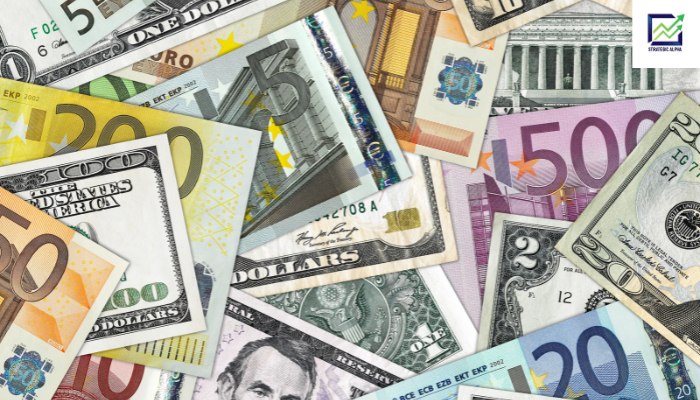On Thursday, March 20, the Indian Rupee touched its two-month high of 86.36 against the US dollar. This was its best since January 24, making bearish traders exit.
The currency has been high in the last few days, marking a 1.2% appreciation over the past seven trading sessions. This is likely boosted by foreign inflows and dollar sales by foreign banks.
The currency has been continuously high in the last few days, possible reasons being the sharp fall in Brent crude oil prices, foreign investor inflows, and strong domestic equities.
As per a currency trader at a Mumbai-based bank, “The recent inflows likely triggered the unwinding of ‘structural’ long dollar/rupee positions in the onshore over-the-counter and in the non-deliverable forward market, further strengthening the Indian currency.”
Is Dollar Struggling?
It seems like the weaker dollar has also benefited the Indian rupee, which brings into the picture potential concerns about the U.S. economic slowdown. This Wednesday, the Federal Reserve lowered the 2025 GDP projections and increased inflation expectations.
Currently, the dollar index is at its lowest level for this year. As per Fed Chair Jerome Powell, “uncertainty at present is “unusually elevated” amid new rapid-fire policies by Trump.”
Impact on Forex Trading
This can be a great opportunity for those who do forex trading. As the Indian currency strengthens against the U.S. dollar, forex traders may see great profits. This is one of the top global market trends as of now as forex traders are expected to benefit from the price differences as Indian Rupee keeps appreciating.
Stay Updated With Global Market Trends With Strategic Alpha
Being a leading stock market learning community platform, Strategic Alpha believes in keeping its audiences up-to-date with the latest stock market trends. You can join the live webinar hosted by experienced investors or become a part of the Conviction Club, which is a large online community of traders.
You can learn, share experiences, get the latest knowledge, and do much more by joining this club while also indulging in one-to-one sessions with mentors. For any further information or queries, get in touch with us!
FAQs
1. What are foreign inflows, and how do they impact the Indian Rupee?
Ans. Foreign inflows, which include FDI (Foreign Direct Investment) and FPI (Foreign Portfolio Investment), are any form of capital entering a country from other countries. With an increase in inflows, the demand for local currency arise, which strengthens it. Here, as foreign inflows to India increase, it strengthens Indian Rupee.
2. Who are ‘bears’ in the forex market, and why are they exiting?
Ans. Bears or bearish traders in the forex trading market are traders who believe that the market is showing a downward trend or a currency pair’s price will decline and they will benefit from this decline. Now as the Indian currency has constantly been high since last few days, bears are exiting as the downward trend seems to be ended.
3. What factors other than inflows can influence the rupee’s value?
Ans. There are several factors that influence the value of Indian rupee, including inflation, interest rates, political factors, FII, foreign exchange reserve, etc.
4. Does a stronger rupee benefit stock markets in India?
Ans. As the Indian rupee strengthens, some sectors in the stock market benefit from it while others may lose out. It depends whether the sector is based on more imports or exports. Oil companies may gain profit from it as import costs decline. On the other hand, IT firms may suffer as they export earnings go down.




